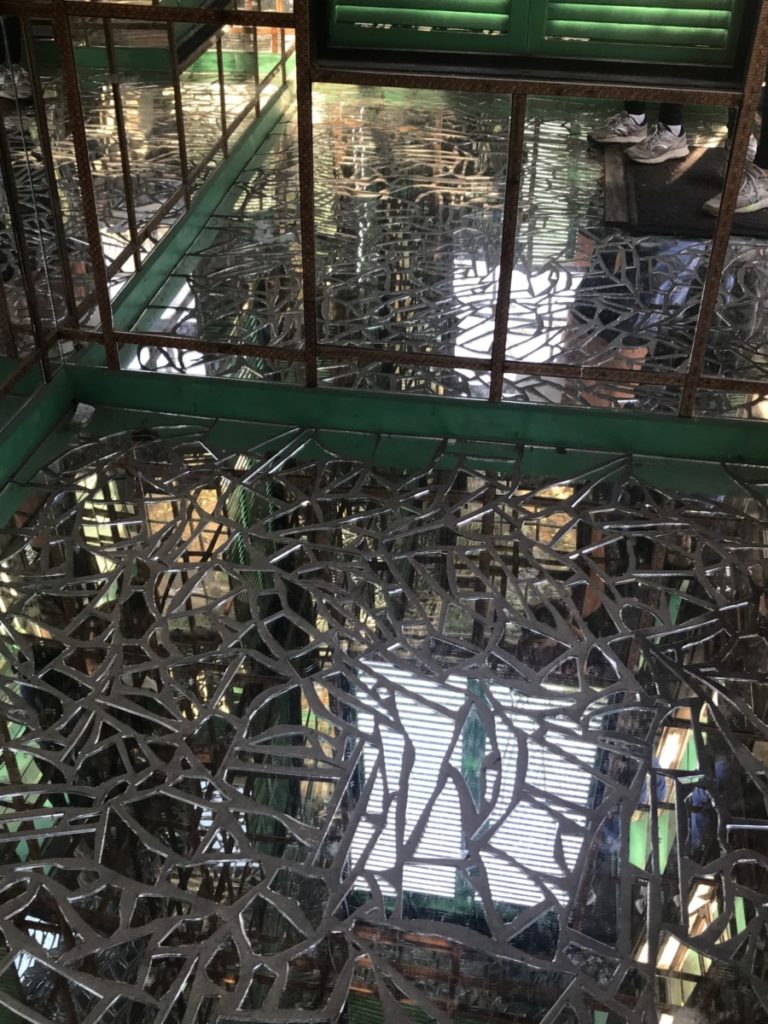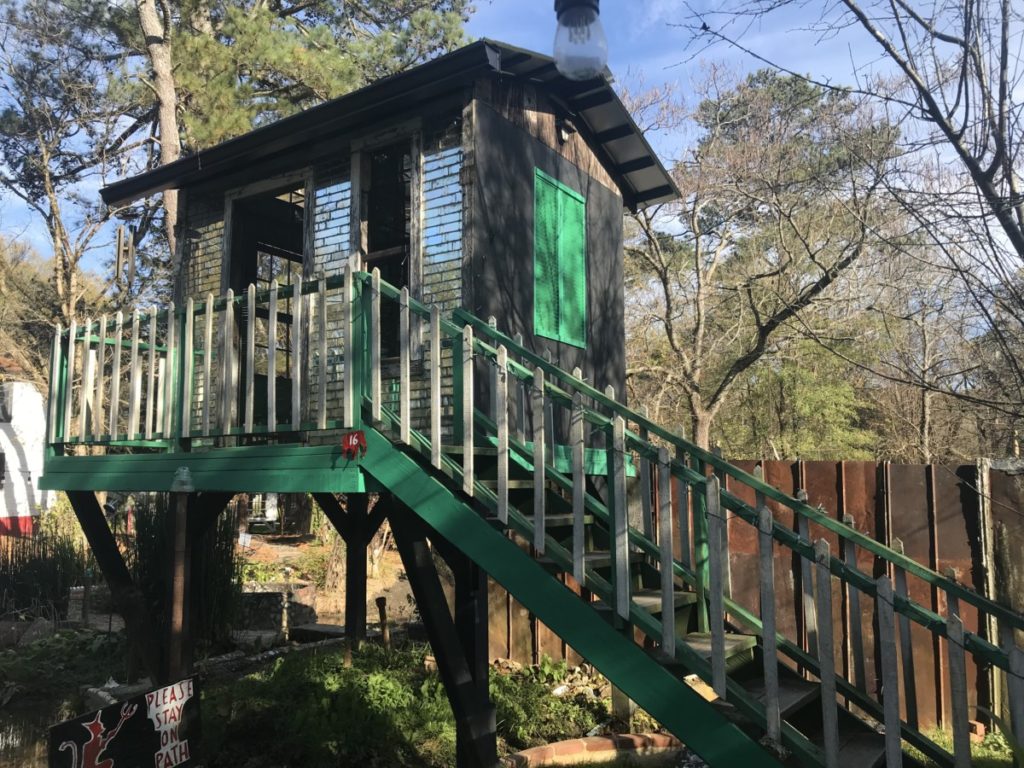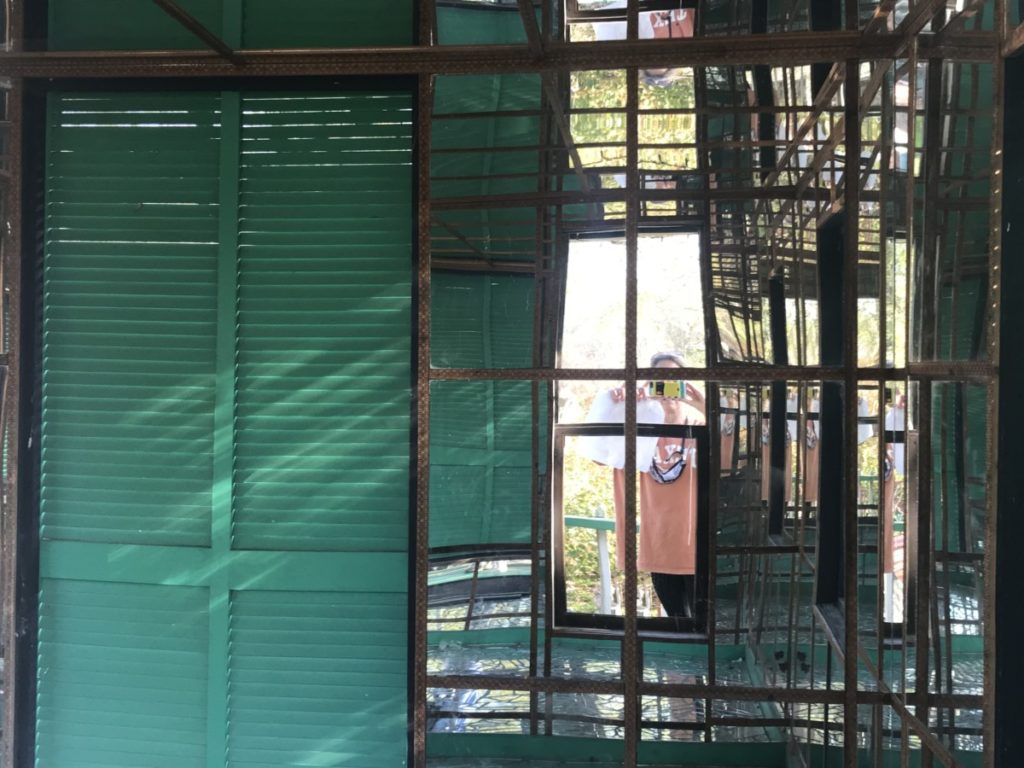For years, I’ve heard about the Reverend Howard Finster (1916-2001) and his eclectic folk art. After seeing some of his works displayed at the High Museum, I wanted to know more. I soon put his home/outdoor museum called Paradise Garden on my bucket list.
Howard Finster Background
Born in Alabama, Howard Finster served as a Baptist preacher in Northwest Georgia for decades. However, to support his wife and five children, he repaired bicycles and televisions on the side. In 1976, he felt God telling him to paint 5,000 pieces of art even though he wasn’t an artist.

As Finster’s rudimentary art grew, the world took notice. Galleries began selling his work and rock group REM filmed their video “Radio Free Europe” at the property. In 1984, he made an appearance on national television on “The Tonight Show.” Both REM’s album “Reckoning” and Talking Heads’ album “Little Creatures” feature Finster’s art on the cover.
Location & Admission
Located in Summerville, GA just about a 1.5-hour drive northwest of Atlanta, the 3-acre property lies in a residential neighborhood of small, one-story houses. No wonder – the property served as his home, bicycle repair shop and studio for decades. However, I did wonder how neighbors feel about tourists driving through as we came to a small parking lot with about 10 spots at the street’s end. Across from the lot, a chain-link fence surrounded the property and a portable toilet sat in the front yard.

We paid the admission fee ($15 for adults, $5 for students) at the window. The worker gave us a hand-drawn map and suggested we walk around the exhibits before watching the film.
The Grounds
As we walked along the paths, a hodge-podge of items greeted us. Whether they are viewed as art or junk is left to the beholder. Incense wafted through the air and we could hear Finster’s voice (ranting and singing) on the video playing near an open window.
One of the first things we saw was the iconic World’s Folk Art Church, a 5-story, multi-sided building. Although visitors can’t go inside, the Paradise Garden Foundation hopes to restore the structure in the next few years.
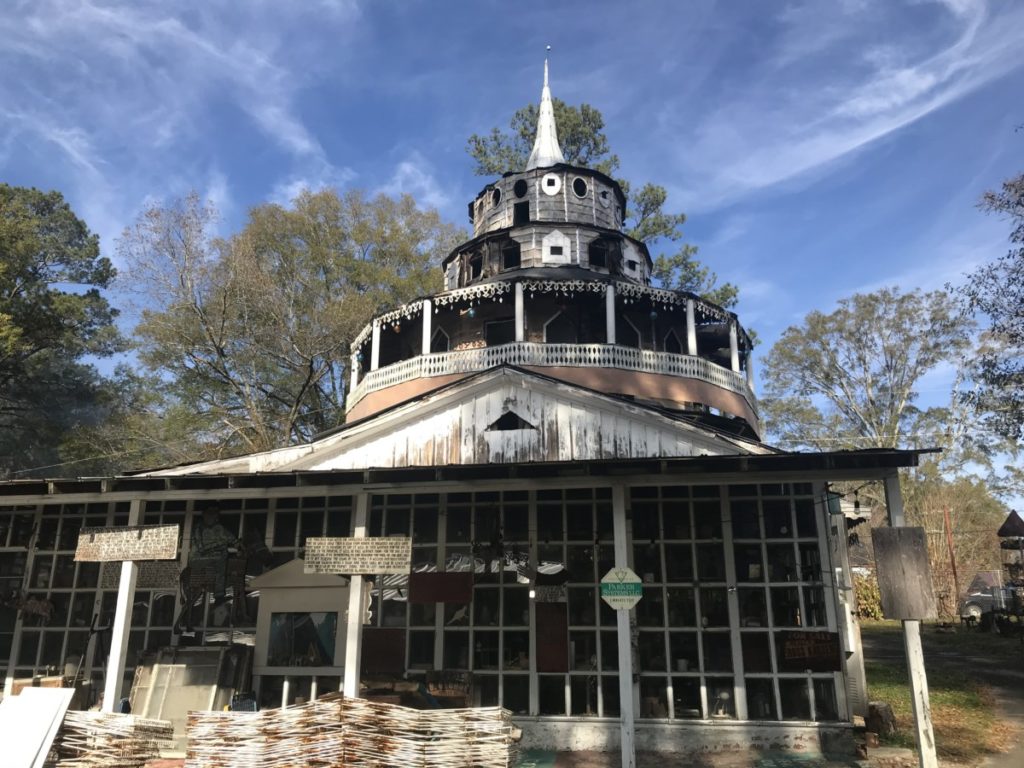
Churches are a big theme throughout the property. In the far corner, we walked by Steeple Reindeer resembling a child’s outdoor dollhouse with a metal steeple.
Later, we walked into the Meditation Chapel with its open-air arch windows. Written in thick black markers by Finster, Scriptures and admonitions flanked the walls. Instead of a pulpit at the front of the chapel, a white casket sits with a wooden cut-out of a painted angel hung above. Called the Casket of Names, it’s just as eerie as the Tomb of the Unknown Body that lies outside.

Other Structures
At times I felt I was at a mini-golf course with all the little buildings and sculpture mounds, other times I saw the details in all the objects. The Bottle House was one such place. I mean, who thinks to build a structure out of soda bottles? The roof even donned a couple of glass shades from old light fixtures and a small metal sculpture. Finster recycled before recycling became cool.

I was pleasantly surprised we could walk into the Mirror House. Climbing up the stairs, I couldn’t appreciate what was inside. Mirrors encased in window panes and crackled mirror shards on the floor caused the reflections to bounce back in unusual ways.
At the oldest part of the property, we came to a mosaic wall which gave a glimpse at how Finster’s mind worked. Pieces of junk, broken glass and tile were mixed with sculptures encased in concrete. Even pathways had mosaics depicting churches and listing names of family members.

We walked past his original bicycle/TV repair shop, which looked more like a wooden shed that would blow down with the next gust of wind. A green shed showcased his 1983 white Cadillac where he had drawn all over it. Nearby stood the Hubcap Tower, a Christmas tree-shaped structure of hubcaps. That’s not to be confused with the Bike Tower, which features rusted bicycle frames in a big mound.
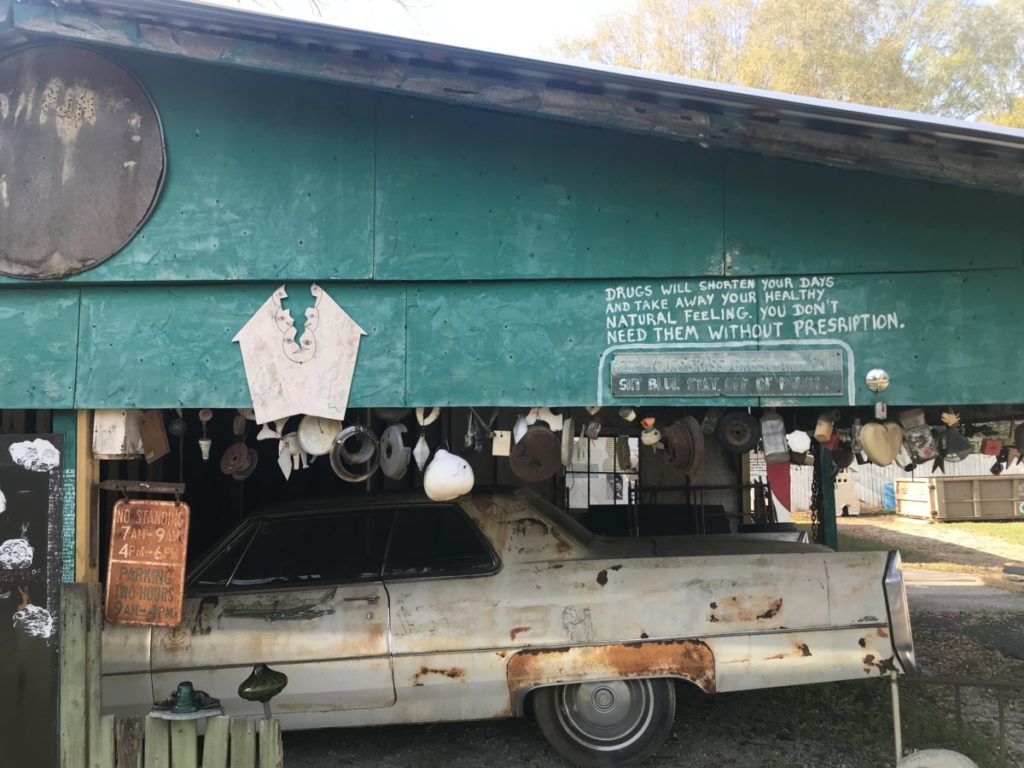
We concluded with the L-shaped building called the Rolling Chair Ramp Gallery. The elevated structure housed Finster memoriabilia and news clippings and art from visitors to Paradise Garden. At the mid-way point, a film played loudly. In it, Finster says he experienced visions from God for many years and wonders if he might be an alien as he has never felt normal. The film also shows footage from his appearance on the “Tonight Show” where he sang songs and played the banjo.

Was he brilliant or just plain whackadoodle? Whatever you decide, he remained true to his mission of creating works of art dedicated to God.
For More Information
Because Finster became well-known during the 1980s, information about many of his works can be easily found. Several works are located at the Smithsonian Museum. But to get a feel for Paradise Garden, look up the video on YouTube from REM’s single “Radio Free Europe.”
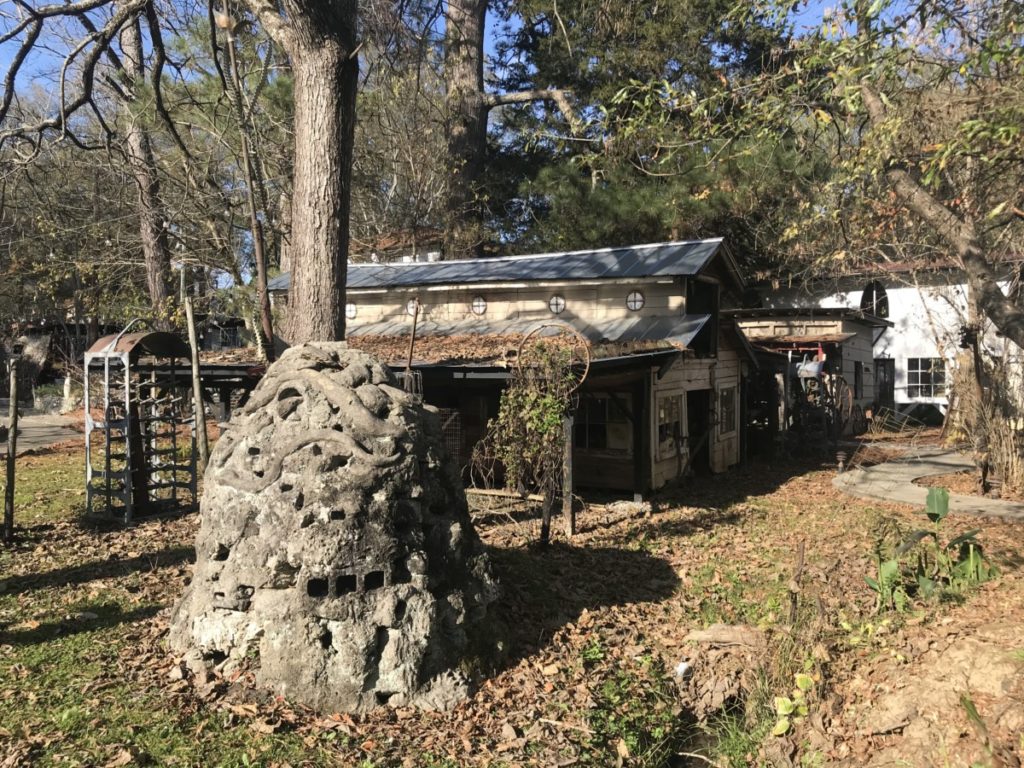
Controversial in life, Finster’s Paradise Garden faced its own controversy after his death. Facing neglect and theft, the grounds almost fell beyond repair. Fortunately, concerned people formed the Paradise Garden Foundation, which has sought grant money and continues to restore the property. For a great article about this, see Anna Lockhart’s article “Resurrected and Revised: Howard Finster’s Paradise Garden” on The Bitter Southerner blog.
For more information about visiting Paradise Garden, click the Foundation’s website here.

